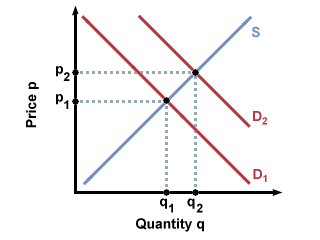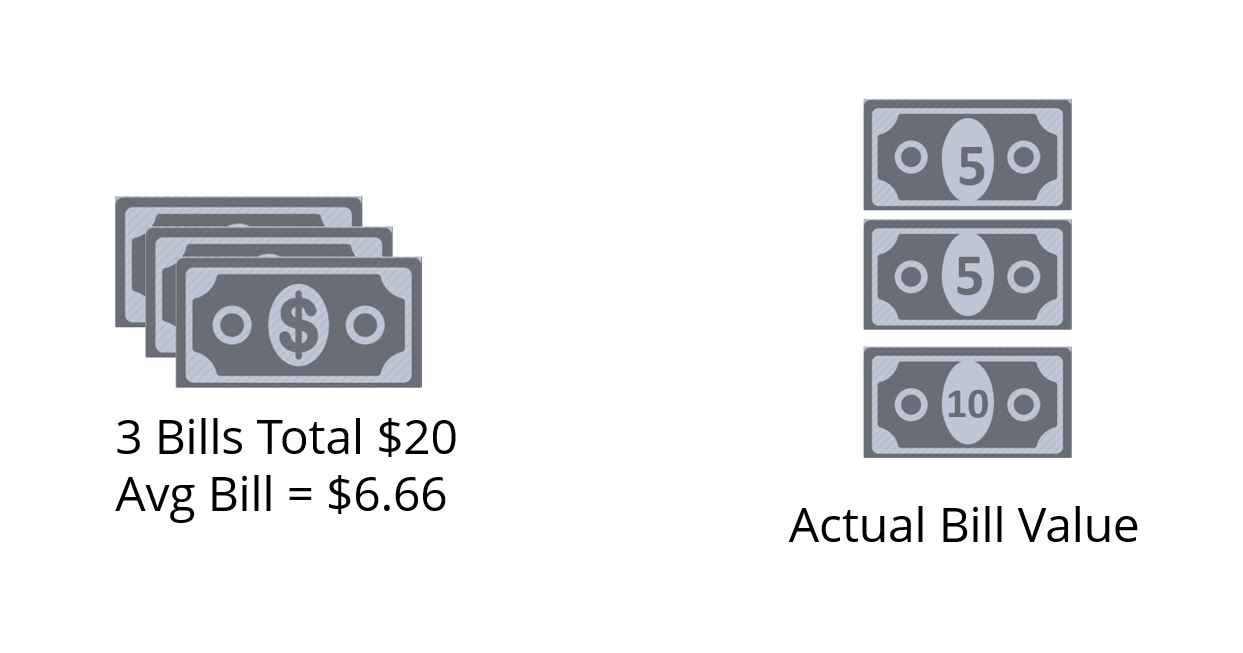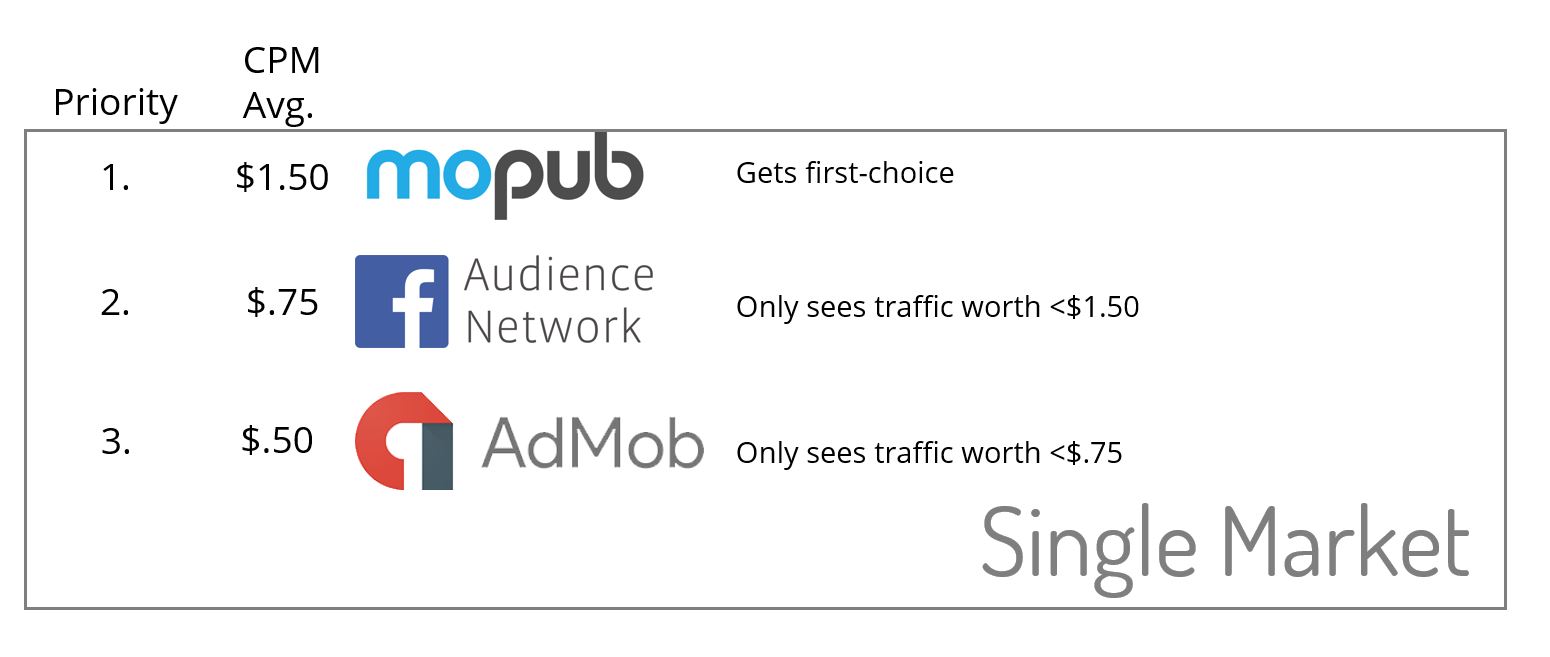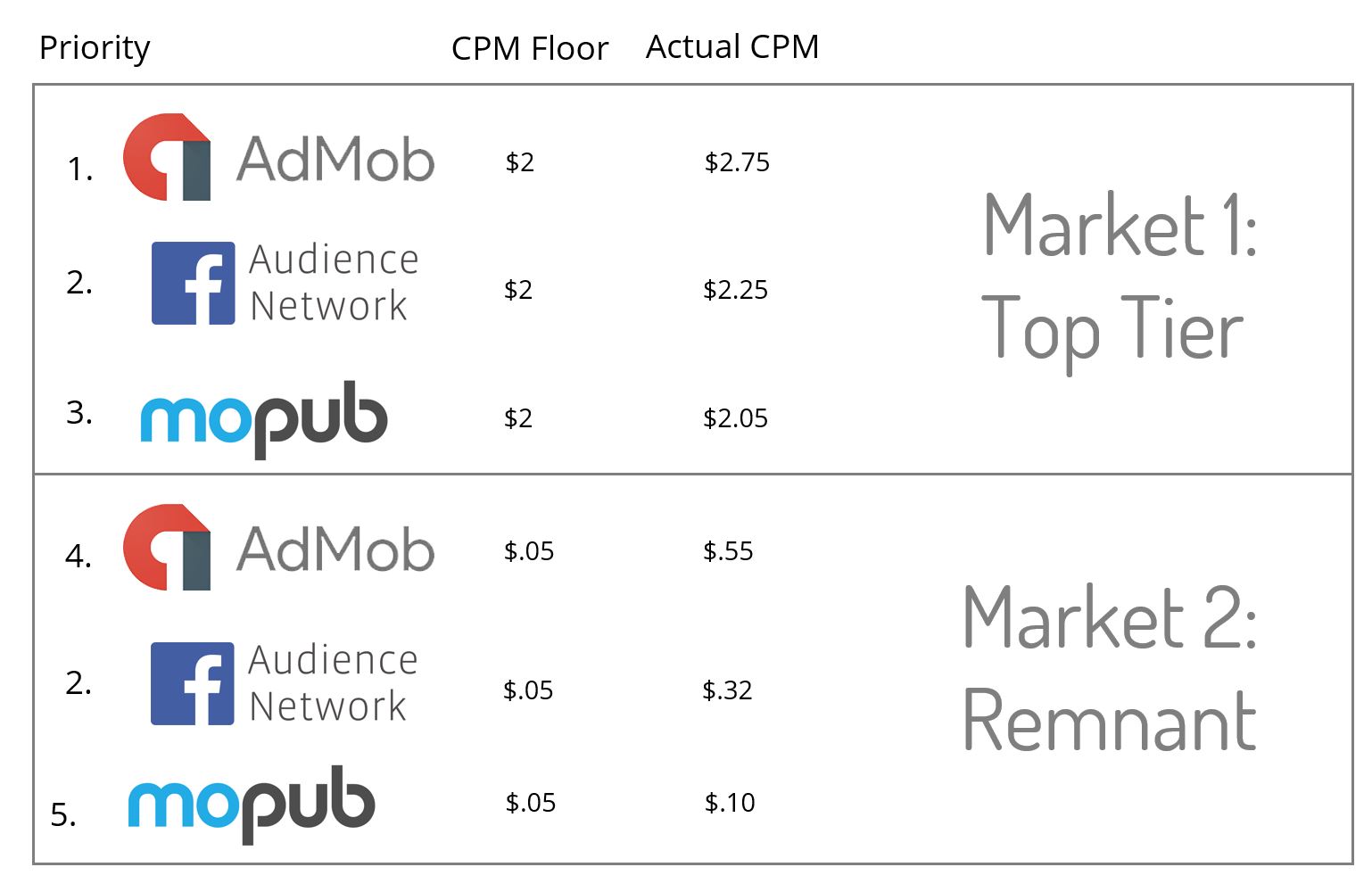Averages Lie
Averages Lie
Stop relying on CPM averages when optimizing your traffic.
At AdLibertas, we use technology to increase the efficiency of how developers sell traffic. Today, the majority of app developers struggle with their tools and use imperfect data and broad CPM averages to make critical decisions when selling their ad traffic. We’ve outlined why relying on averages can short-change your earning potential.
Forward: You’re the target reader if you’re monetizing a mobile app with advertising and are interested in methods for increasing earnings.
1. Economics 101: More is Better
First, let’s start with some economic definitions about the mobile in-app ad market:
- App developers sell ad request traffic, making them market suppliers (inventory).
- Ad networks are the ad buyer and represent market demand.
- Marketplace buyers always want to pay the lowest price possible. Fewer buyers in a market result in lower prices, increasing buyers will increase competition and drive up prices.
- Competition creates a healthy marketplace for both buyers and sellers.

Increase in demand drives up both quantity purchased & price
This means app developers are constantly interested in finding more demand sources to compete for traffic. More competition will increase earnings.
2. Not every impression is created equal
If you have 1MM ad requests and your average CPM is $2, should you sell a network their choice of inventory for a $5 CPM?
At first blush, the answer may seem obvious: you’ll earn more if you sell inventory for a higher price. But this isn’t necessarily true. In a simple example: if you had 3 bills that added up to $20, your average bill would be worth $6.66, would you sell a buyer their choice of bills for $8?
Well, obviously no. Because in this example they’d obviously choose the $10 bill and you’d end up losing money. This example is not far off from the truth with your ad traffic.
Advertisers don’t view all traffic as equal, and neither should you — parts of your traffic are worth much more to advertisers than others.
3. Encourage competition across markets with price floors
Today’s ad-networks are siloed into single marketplaces. Working with a single market limits competition to a single group of buyers. To achieve maximum price for your inventory you need to encourage competition among all buyers.
Unfortunately, there doesn’t exist a single comprehensive marketplace allowing open trade among all ad buyers, so we– the developers– are forced to rely on ad mediation to broker competition amongst buyers across multiple markets.
Traditionally, app developers cobble together marketplaces competing on broad aggregated price averages, relying on one network for top-tier inventory and others to pick up the remnant traffic. This, however, limits networks to a single band of inventory. To achieve maximum price we need to encourage competition of markets on more than a single price point.
Enter the concept of market segmentation: using price floors, you can create segments of your traffic and enable a single demand source to compete across multiple price tiers, effectively increasing overall competition for your inventory.

price floors allow a single demand source to compete across multiple price tiers, effectively increasing overall competition
Almost all networks have the ability to create price floors, app developers may then offer the same inventory across multiple pools of demand moving down a price-restricted waterfall, maximizing exposure of impressions to multiple demand sources.
Correctly using price floors allows more demand to compete for your traffic, earning you more from your ad inventory.
4. Is it worth the trouble?
While the concept of increasing demand across segments of inventory may seem simple, the reality of a dynamic waterfall applied across multiple countries can be daunting. Many developers have the question, what’s it worth?
Some traffic isn’t worth much to buyers, while other is highly sought. Your resulting price increase will depend on how effective you are enabling competition today. For highly optimized pools of traffic – or for unwanted traffic–: there will be little change in pricing. Others who’ve underserved competition will see significant upside.
But on average, we’ve found creating efficient competition among ad networks increase ad revenue 30%.
5. How we managed the increased overhead
The savvy traffic seller knows about price floors and likely already segments inventory by geo, market, and across different countries. But rapidly, management of market segmentation stacks up. Not only must you compile pricing across markets, you then need to manage and update pricing as often as possible to create competition efficiency. The overhead can grow immense.
We know this first hand. In our early stages we were excited by the results of inventory segmentation on our own applications but the overhead quickly grew too high to manage in any scalable fashion. Of course the key is automation. We built systems to automatically gather the latest pricing, then update our inventory segments, turning the daily chore into an automated status report. We realized the power and decided to start offering it to our fellow app developers.

“Our reasons for using AdLibertas are simple – they allow us to make more money per ad served and ‘ignore’ daily waterfall management allowing us to focus on what we do best: build and launch fun games consistently & profitably.”
Andrew Stone, CEO, Random Logic Games


About us:
The name AdLibertas comes from our motto “ad victoriam mercaturae ducit libertas” which is Latin for “the free market wins.” As former app-developers we’ve designed a publishers-first solution to help app developers earn more from their in-app ads.
Contact us or sign-up to learn how other app developers are earning more by automating their current advertising platforms with AdLibertas.




